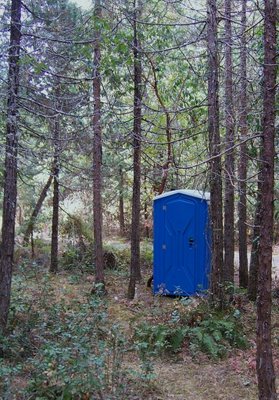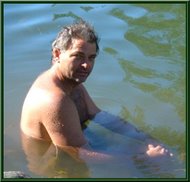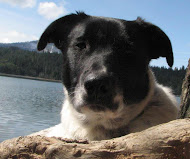I Honestly Thought I Knew Everything--
A House rerun led me to click the tv around the horn this evening. I ran into a show that was describing Japanese balloon bombs.
Wow.
During the war, the US government asked the press to not mention the bombs, so that the Japanese would think they were ineffectual and stop sending them.
These bombs actually killed a family of Oregonians, who found one undetonated and tried to move it, causing it to explode.
Wikipedia says--
Initial tests took place in September 1944 and proved satisfactory. However, before preparations were complete, B-29s began their raids on the Japanese home islands. The attacks were somewhat ineffectual at first but still fueled the desire for revenge sparked by the Doolittle raid.
The first balloon was released in early November 1944. Major Takada watched as the balloon flew upward and over the sea: "The figure of the balloon was visible only for several minutes following its release until it faded away as a spot in the blue sky like a daytime star."
By early 1945, Americans were becoming aware that something strange was going on. Balloons had been sighted and explosions heard, from California to Alaska. Something that appeared to witnesses to be like a parachute descended over Thermopolis, Wyoming. A fragmentation bomb exploded, and shrapnel was found around the crater. A P-38 Lightning shot a balloon down near Santa Rosa, California; another was seen over Santa Monica; and bits of washi paper were found in the streets of Los Angeles.
parachute descended over Thermopolis, Wyoming. A fragmentation bomb exploded, and shrapnel was found around the crater. A P-38 Lightning shot a balloon down near Santa Rosa, California; another was seen over Santa Monica; and bits of washi paper were found in the streets of Los Angeles.
Two paper balloons were recovered in a single day in Modoc National Forest, east of Mount Shasta. Near Medford, Oregon, a balloon bomb exploded in towering flames. The Navy found balloons in the ocean. Balloon envelopes and apparatus were found in Montana, Arizona, Saskatchewan, in the Northwest Territories, and in the Yukon Territory. Eventually, an Army fighter managed to push one of the balloons around in the air and force it to ground intact, where it was examined and filmed.
the balloons around in the air and force it to ground intact, where it was examined and filmed.
And...
Nobody believed the balloons could have come directly from Japan. It was thought that the balloons must be coming from North American beaches, launched by landing parties from submarines. Wilder theories speculated that they could have been launched from German prisoner of war camps in the U.S., or even from Japanese-American internment centers.
Some of the sandbags dropped by the fusen bakudan were taken to the Military Geology Unit of the US Geological Survey for investigation. Working with Colonel Sidman Poole of U.S. Army Intelligence, the researchers of the Military Geological Unit began microscopic and chemical examination of the sand from the sandbags to determine types and distribution of diatoms and other microscopic sea creatures, and its mineral composition. The sand could not be coming from American beaches, nor from the mid-Pacific. It had to be coming from Japan.
fusen bakudan were taken to the Military Geology Unit of the US Geological Survey for investigation. Working with Colonel Sidman Poole of U.S. Army Intelligence, the researchers of the Military Geological Unit began microscopic and chemical examination of the sand from the sandbags to determine types and distribution of diatoms and other microscopic sea creatures, and its mineral composition. The sand could not be coming from American beaches, nor from the mid-Pacific. It had to be coming from Japan.
Wow.
During the war, the US government asked the press to not mention the bombs, so that the Japanese would think they were ineffectual and stop sending them.
These bombs actually killed a family of Oregonians, who found one undetonated and tried to move it, causing it to explode.
Wikipedia says--
Initial tests took place in September 1944 and proved satisfactory. However, before preparations were complete, B-29s began their raids on the Japanese home islands. The attacks were somewhat ineffectual at first but still fueled the desire for revenge sparked by the Doolittle raid.
The first balloon was released in early November 1944. Major Takada watched as the balloon flew upward and over the sea: "The figure of the balloon was visible only for several minutes following its release until it faded away as a spot in the blue sky like a daytime star."
By early 1945, Americans were becoming aware that something strange was going on. Balloons had been sighted and explosions heard, from California to Alaska. Something that appeared to witnesses to be like a
 parachute descended over Thermopolis, Wyoming. A fragmentation bomb exploded, and shrapnel was found around the crater. A P-38 Lightning shot a balloon down near Santa Rosa, California; another was seen over Santa Monica; and bits of washi paper were found in the streets of Los Angeles.
parachute descended over Thermopolis, Wyoming. A fragmentation bomb exploded, and shrapnel was found around the crater. A P-38 Lightning shot a balloon down near Santa Rosa, California; another was seen over Santa Monica; and bits of washi paper were found in the streets of Los Angeles.Two paper balloons were recovered in a single day in Modoc National Forest, east of Mount Shasta. Near Medford, Oregon, a balloon bomb exploded in towering flames. The Navy found balloons in the ocean. Balloon envelopes and apparatus were found in Montana, Arizona, Saskatchewan, in the Northwest Territories, and in the Yukon Territory. Eventually, an Army fighter managed to push one of
 the balloons around in the air and force it to ground intact, where it was examined and filmed.
the balloons around in the air and force it to ground intact, where it was examined and filmed.And...
Nobody believed the balloons could have come directly from Japan. It was thought that the balloons must be coming from North American beaches, launched by landing parties from submarines. Wilder theories speculated that they could have been launched from German prisoner of war camps in the U.S., or even from Japanese-American internment centers.
Some of the sandbags dropped by the
 fusen bakudan were taken to the Military Geology Unit of the US Geological Survey for investigation. Working with Colonel Sidman Poole of U.S. Army Intelligence, the researchers of the Military Geological Unit began microscopic and chemical examination of the sand from the sandbags to determine types and distribution of diatoms and other microscopic sea creatures, and its mineral composition. The sand could not be coming from American beaches, nor from the mid-Pacific. It had to be coming from Japan.
fusen bakudan were taken to the Military Geology Unit of the US Geological Survey for investigation. Working with Colonel Sidman Poole of U.S. Army Intelligence, the researchers of the Military Geological Unit began microscopic and chemical examination of the sand from the sandbags to determine types and distribution of diatoms and other microscopic sea creatures, and its mineral composition. The sand could not be coming from American beaches, nor from the mid-Pacific. It had to be coming from Japan.
And so there ya go...
I think I like the Japanese a lot better these days.

































3 comments:
I thought I was aware of all the things going on then, but this is the first I've heard of these weapons. Since some landed on the West Coast it seems strange that I never heard anything about them. I suppose it just goes to prove that low-tech can work.
A clear and fascinating description.
Thank you.
BIL watched that ballon program also... it was interesting the bits and pieces I caught from time to time. I had heard about some being over Oregon.. not sure where on the coast it was though.
Post a Comment